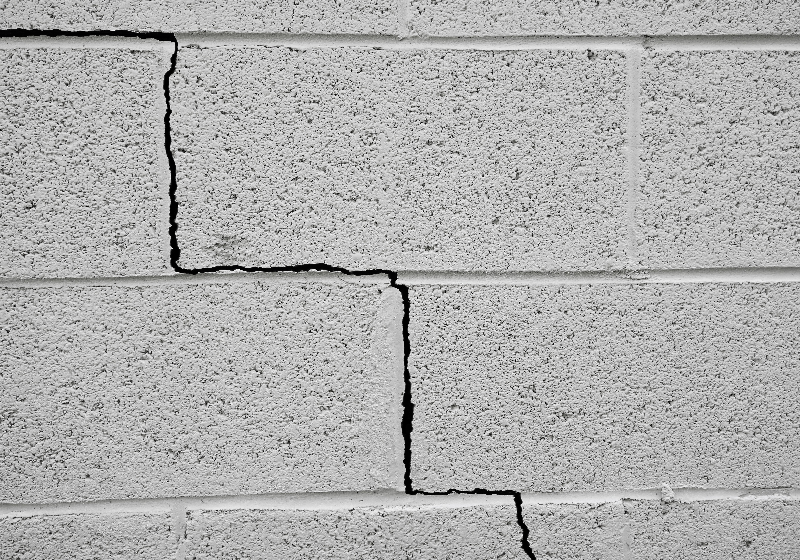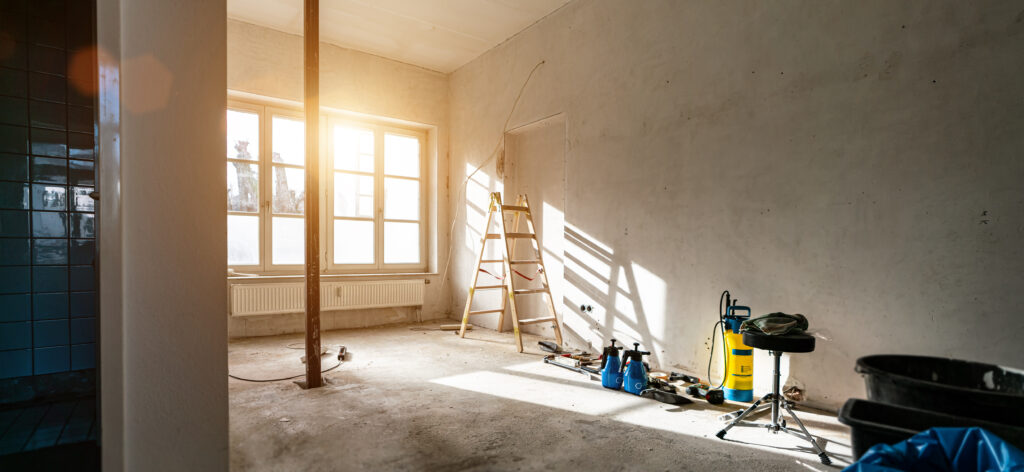If you own a home, you’re likely no stranger to foundation cracks. Cracks happen to most homes, and in the vast majority of cases, they’re nothing to be overly concerned about. The same may be said of your commercial building, but the telltale signs of a true foundation issue may look a little different. Below are a few surprising signs that your commercial foundation could be in need of repair.
1. Doors and windows aren’t opening or closing and floors are warped.
There are a number of things that could cause windows and doors to warp out of alignment. A shifting foundation is only one possibility on a long list of others, so you’ll need to look for context clues. For example, if your windows and doors aren’t closing and you’ve noticed flooring issues, a faulty foundation could be the culprit. Look for cracked tiles, bunched up linoleum, cracks in concrete and warped wood floors. Since the floor is positioned directly over the foundation, it could explain inexplicable issues.
2. Your building is experiencing an unexplainable spike in water usage.
Commercial plumbing problems are exceedingly common, but they’re also not typically difficult to troubleshoot and solve. When a building’s foundation is involved in a plumbing problem, easy fixes unfortunately aren’t the norm. Instead of a clogged pipe or low water pressure, you may be dealing with a shifting foundation that has placed immense strain on the part of your system that is below ground. You can fix subterranean plumbing problems individually as they arise, but remember, if you don’t address the foundation issues that are causing them, the issues will repeat themselves.
3. You can see diagonal exterior cracks or “stair-step” cracks in brick.
Diagonal cracks or cracks that mimic stairsteps in brick can be a sign of a sinking foundation, indicating a potentially serious repair down the road. Diagonal cracks are typically caused by soil pushing against the foundation. Water, whether it be rain or groundwater, can cause the soil surrounding the foundation to expand and contract creating a hydraulic ram effect pushing the wall inward and causing it to become more likely to collapse. Stair-step cracks can usually be found above the foundation in the exterior of a brick and mortar building. While not as serious as diagonal cracks, stair-step cracks indicate foundation movement and may cause basement leaks down the road if not addressed.
4. You’ve spotted exterior fascia gaps.
Often called the roofline or main board, the fascia board is situated where the roof meets the outer walls of the structure (you can usually identify it easily because it holds the gutter). While it couldn’t be located much farther from your building’s foundation, the fascia can tell you a lot about what may be happening at ground level and below. If you notice the fascia board pulling away from the building and creating visible gaps, your foundation has likely shifted significantly. Multi-story buildings are especially prone to showing this faulty foundation clue.
5. Cracks are visible in your building’s interior.
Sometimes issues occurring in a home’s interior can manifest inside. Cracks in drywall, particularly around door and window frames, are common and can simply be a side effect of overuse in high-traffic areas of a commercial building. However, these types of cracks may also indicate foundation shifting. If you can see these interior cracks, plus notice the molding and walls separating, there’s likely a larger foundation issue at play.
A small crack in a newer building is of more concern than a small crack in an older building. NPI commercial property inspectors discuss with commercial building owners and buyers the severity of cracks, such as location and type of crack, and advise them not to pass on a building specifically because of cracks. Unless there are structural or moisture issues, most cracks can just be monitored and, if needed, many repairs are not hugely expensive. However, keep in mind that foundation issues come in many forms, and, when in doubt, you should consult a specialist.



